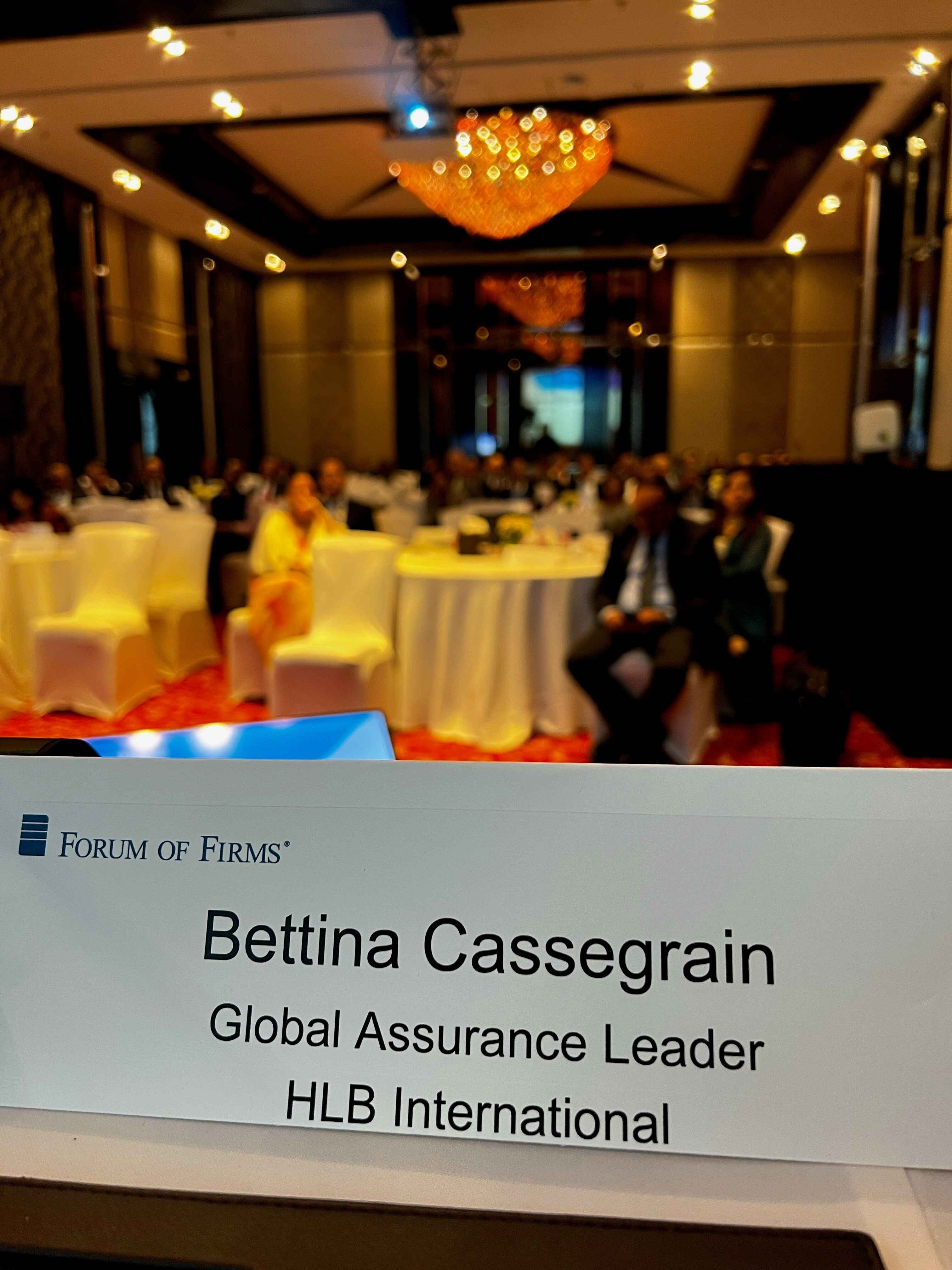Turning obligations into opportunities: the key to better audit quality
Blog by Bettina Cassegrain, HLB's Global Assurance LeaderPreparing for my participation in a panel discussion on Global Developments within the Profession, at the Forum of Firm’s Audit Quality Event in Mumbai last week, made me reflect on the key requirements which have to be met to achieve adequate implementation and adoption of standards.
If we take the incoming International Standards on Quality Management as an example, we realise pretty quickly that the overall objective is undisputed. Regulators, standard setters, stakeholders and the profession all want the same thing: better audit quality and increased trust in the profession.
But how to go about it at a time when auditors were still digesting the ISA 540 (revised) implementation, are preparing for the incoming ISA 315 (revised) standard and adopting technology in record speed during Covid? To say that appetite for an additional compliance challenge was low, would be an understatement.
And yet, with only a few weeks until the 15th December implementation deadline, it looks as if the roll out of the new quality management standards ISQM1, ISQM2 and ISA 220 (revised) at our HLB member firms will be a successful one, more successful in fact than any other roll out we have seen in the recent past.
So what is different this time?
In my mind, the key lies in outreach activities which started as early as 2019. I have memory of several very fruitful and collaborative deep dive events with both regulators and standard setters. The wonderful platform that is the Forum of Firms made it all possible. It provided a space where networks could have the voice of their member firms be heard and their concerns taken seriously. This was especially important for mid-tier networks given the introduction of the concept of scalability.
From a standard setting perspective, the candid conversations held with auditors were an opportunity to test ideas and assumptions and ensure there was as much alignment, concerning the overarching principles, and the vision behind the new suite of standards, as possible. Most importantly, it was also a chance to hear the very real concerns of the people on the ground who would have to make it all happen.
Speaking of frank and open discussions, I must not forget the moments of brainstorming and exchange between networks, when any thought of competition remained outside the room and the sole focus was on making the profession better together.

As for the result of all of this, at HLB, we spent 6 months working with a consultant, provided regional outreach initiatives and webinars in 4 different languages and created our proprietary HLB ISQM app.
Most importantly though, our member firms have understood the message that they have everything to play for. Firms organised their own, sometimes regional, working groups and carried out gap analyses during the implementation process to genuinely understand their own firms’ operations, they took ownership of the implementation process and therefore of the audit quality of their firm, and they are running internal training measures to ensure all levels of staff are fully invested in the process.
What we are seeing is indeed very close to what the FRC had envisioned when they spoke about the implementation being ‘not just a compliance exercise …. Firms need to approach implementation with a commitment to truly modernise and tailor their policies and procedures. Retrofitting quality risks to existing quality control policies and procedures will not meet the requirements….’
As for the lessons we have learnt from experience so far: by fostering collaboration, empowering people and allowing them to be proud of their contributions, successful implementation and adoption of standards will take care of itself.



